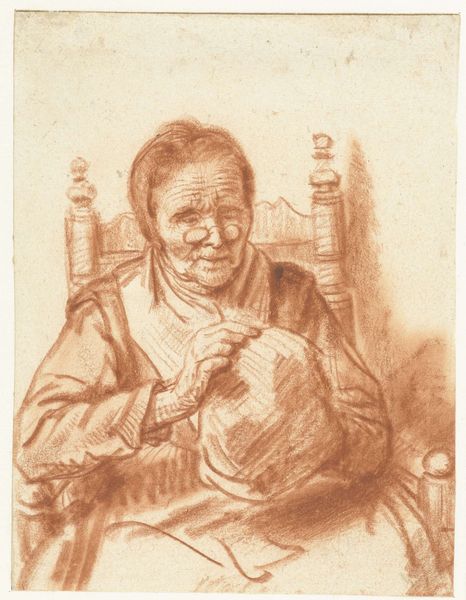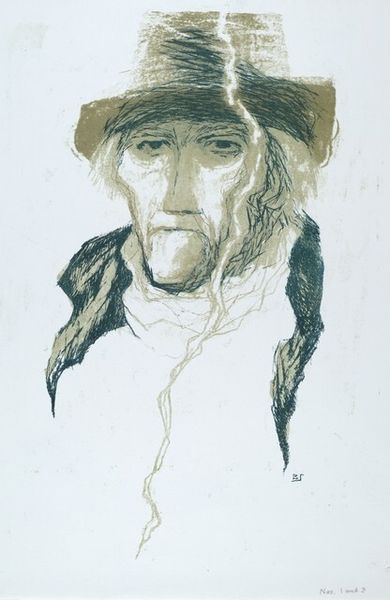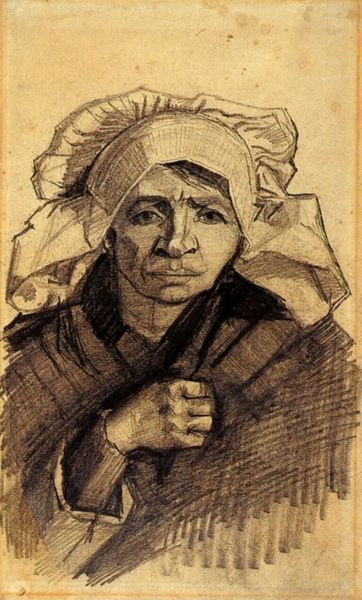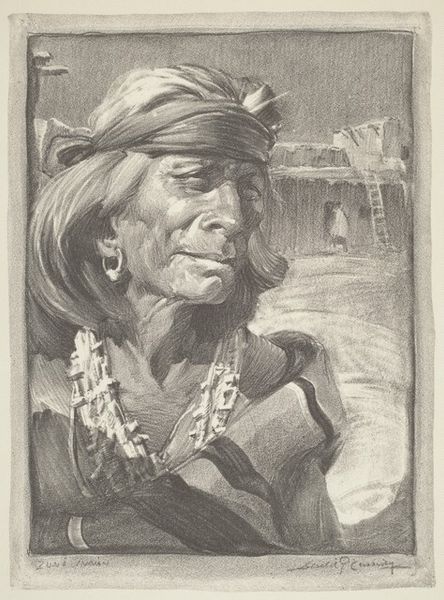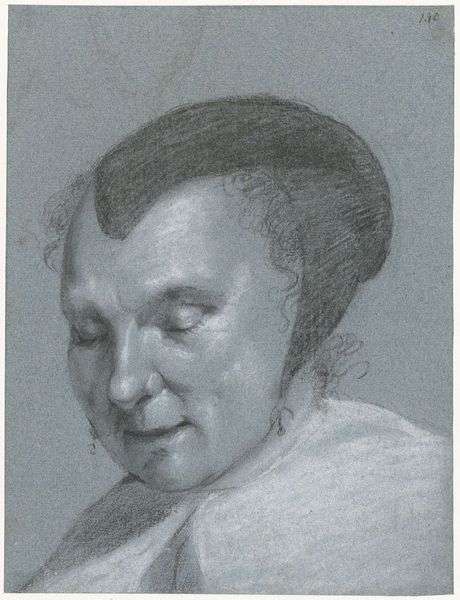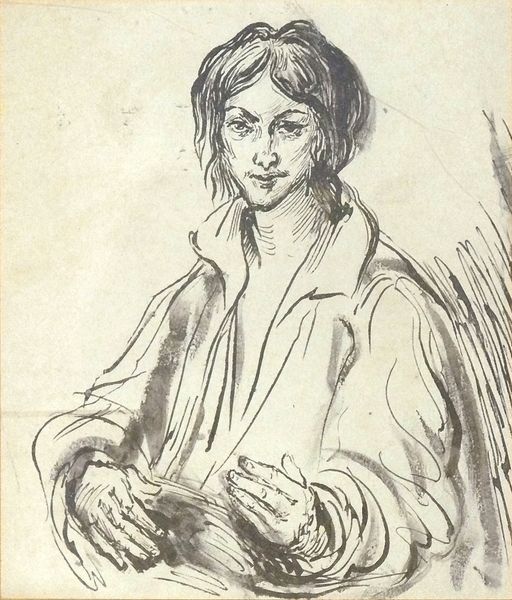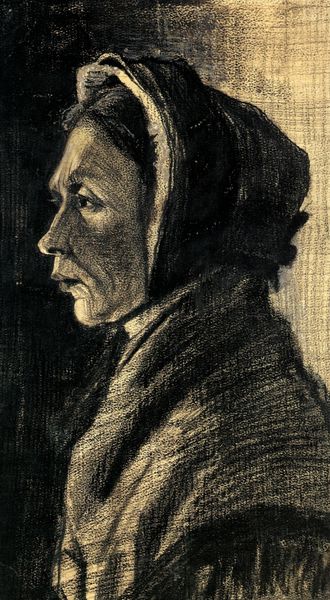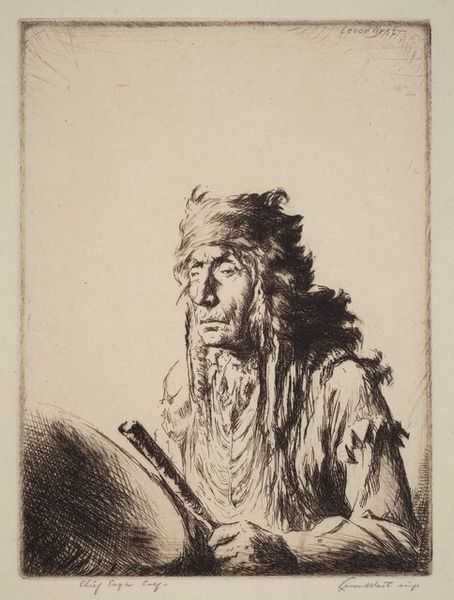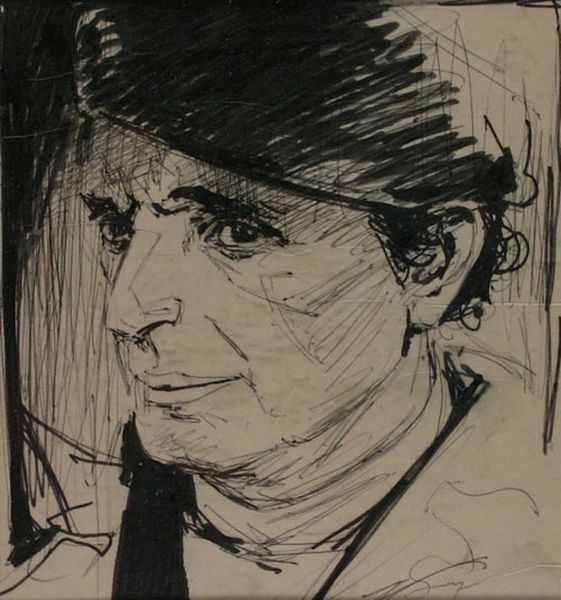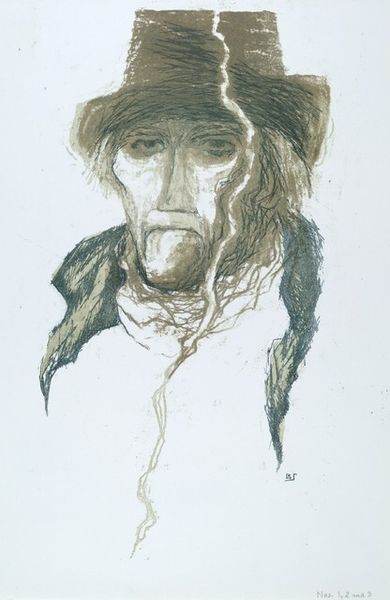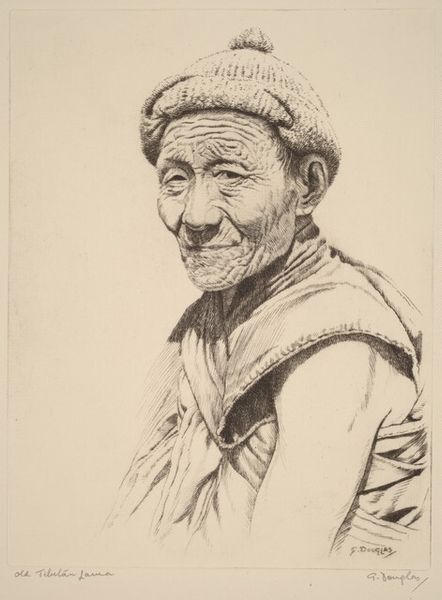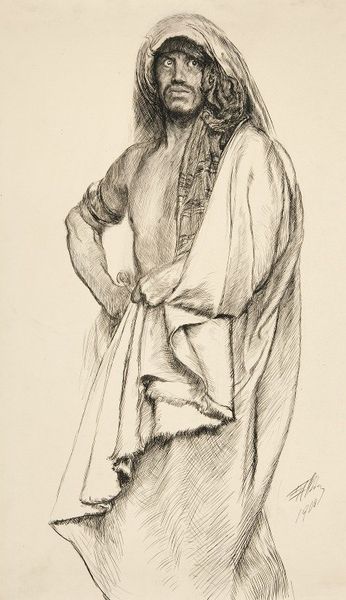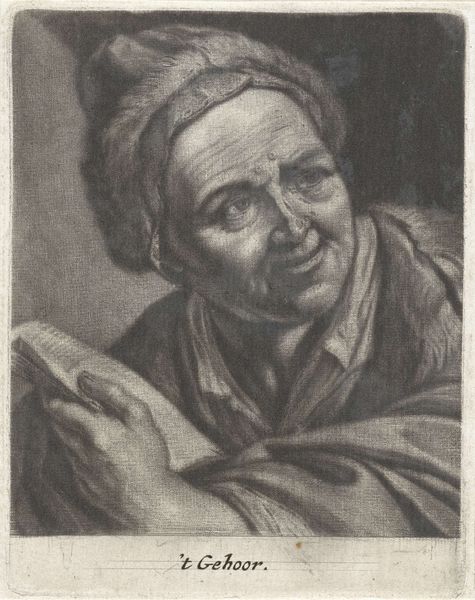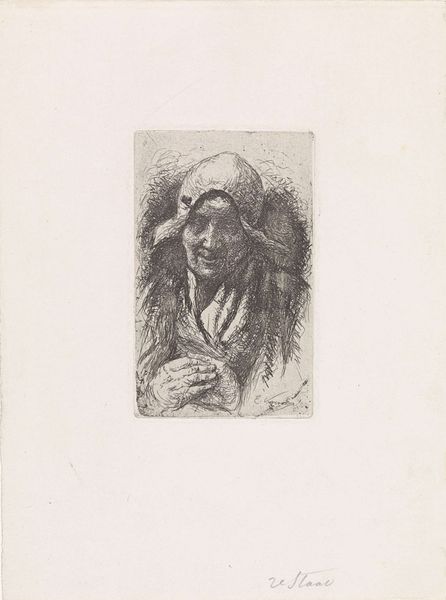
drawing, paper, graphite, charcoal
#
portrait
#
pencil drawn
#
drawing
#
paper
#
portrait reference
#
pencil drawing
#
graphite
#
portrait drawing
#
charcoal
#
academic-art
#
realism
Dimensions: 195 × 125 mm
Copyright: Public Domain
Editor: So here we have Adolph Menzel's "Portrait of a Peasant Woman" from 1884, a drawing in graphite, charcoal, and pencil on paper. It strikes me with its almost brutal honesty. The lines are stark, not romanticized at all. What aspects of the drawing do you find most compelling? Curator: The beauty of this drawing lies precisely in its structural clarity. Observe the layering of lines, creating depth and volume without resorting to painterly illusions. The preliminary sketches of the mouth, for instance, provide an insight into the artist's process, revealing an analytical approach to form. Do you see how the geometry of the face, rather than mere surface appearance, dictates the composition? Editor: I see what you mean about the geometric quality, and the emphasis on form over sentimentality is growing on me. What's the impact of his medium on that feeling? The pencil strokes have this directness that you wouldn't necessarily find in paint. Curator: Indeed. The graphite and charcoal allow for immediate adjustments and a certain raw expressiveness. Note how Menzel uses hatching and cross-hatching to build up tone, emphasizing the play of light and shadow. Consider, too, the very texture of the paper, contributing to the overall visual experience. Would you say this emphasis elevates the ordinary to something significant? Editor: I think so, because the woman's plainness makes me notice every stroke and shadow, which draws me in. The materiality becomes part of the message. Curator: Precisely. By stripping away extraneous details, Menzel compels us to focus on the fundamental elements of artistic construction, revealing the power of pure form. Editor: That’s such a formalist approach to viewing, I would never have gotten that on my own, focusing instead on what she was like and what was going on in Germany at the time. I'll have to work on expanding my vision! Curator: Likewise, your observation about the historical context serves as a reminder that form never exists in a vacuum. The interplay of form and context is, ultimately, what enriches our understanding of art.
Comments
No comments
Be the first to comment and join the conversation on the ultimate creative platform.
